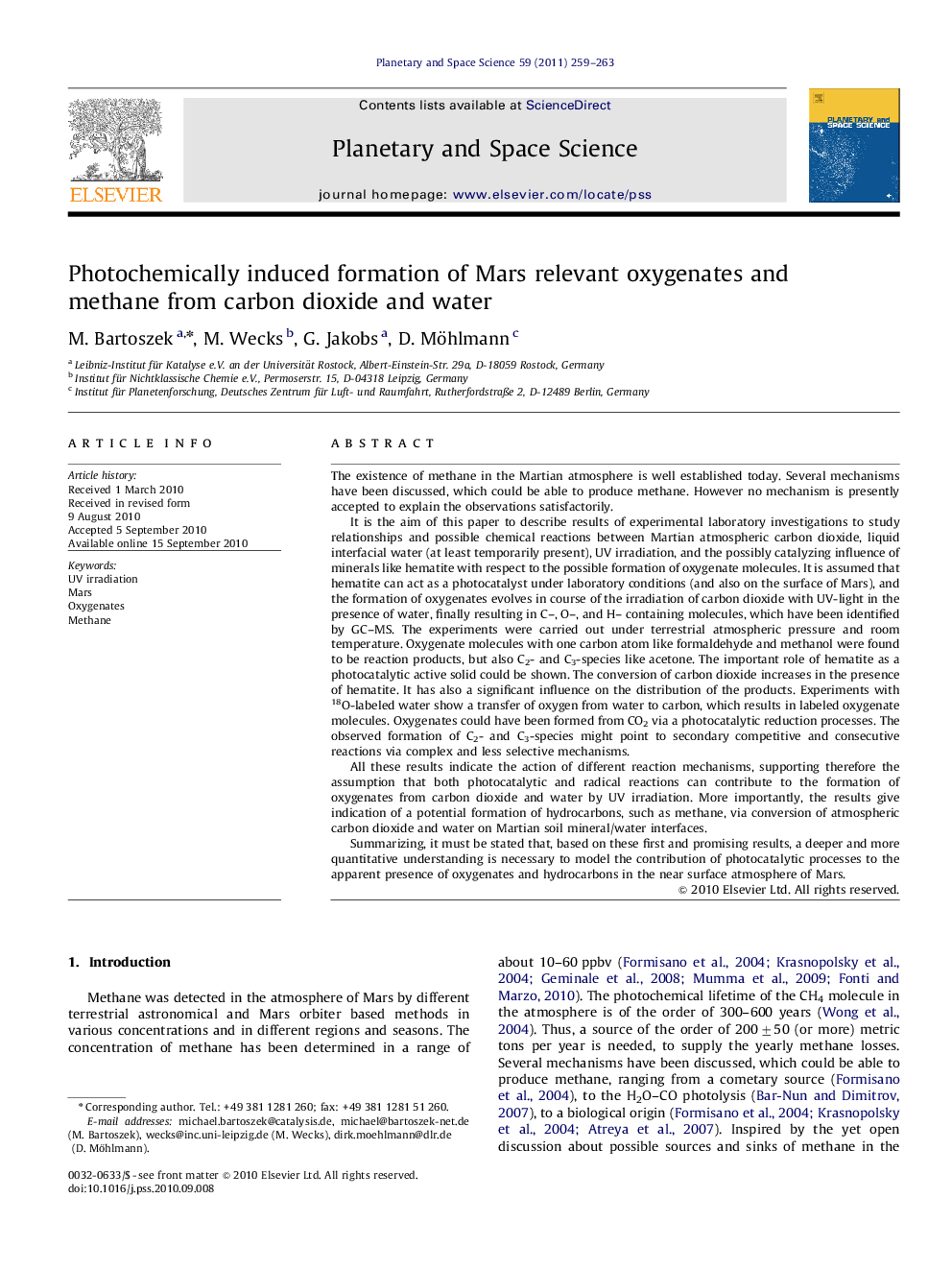| کد مقاله | کد نشریه | سال انتشار | مقاله انگلیسی | نسخه تمام متن |
|---|---|---|---|---|
| 1781582 | 1523965 | 2011 | 5 صفحه PDF | دانلود رایگان |

The existence of methane in the Martian atmosphere is well established today. Several mechanisms have been discussed, which could be able to produce methane. However no mechanism is presently accepted to explain the observations satisfactorily.It is the aim of this paper to describe results of experimental laboratory investigations to study relationships and possible chemical reactions between Martian atmospheric carbon dioxide, liquid interfacial water (at least temporarily present), UV irradiation, and the possibly catalyzing influence of minerals like hematite with respect to the possible formation of oxygenate molecules. It is assumed that hematite can act as a photocatalyst under laboratory conditions (and also on the surface of Mars), and the formation of oxygenates evolves in course of the irradiation of carbon dioxide with UV-light in the presence of water, finally resulting in C–, O–, and H– containing molecules, which have been identified by GC–MS. The experiments were carried out under terrestrial atmospheric pressure and room temperature. Oxygenate molecules with one carbon atom like formaldehyde and methanol were found to be reaction products, but also C2- and C3-species like acetone. The important role of hematite as a photocatalytic active solid could be shown. The conversion of carbon dioxide increases in the presence of hematite. It has also a significant influence on the distribution of the products. Experiments with 18O-labeled water show a transfer of oxygen from water to carbon, which results in labeled oxygenate molecules. Oxygenates could have been formed from CO2 via a photocatalytic reduction processes. The observed formation of C2- and C3-species might point to secondary competitive and consecutive reactions via complex and less selective mechanisms.All these results indicate the action of different reaction mechanisms, supporting therefore the assumption that both photocatalytic and radical reactions can contribute to the formation of oxygenates from carbon dioxide and water by UV irradiation. More importantly, the results give indication of a potential formation of hydrocarbons, such as methane, via conversion of atmospheric carbon dioxide and water on Martian soil mineral/water interfaces.Summarizing, it must be stated that, based on these first and promising results, a deeper and more quantitative understanding is necessary to model the contribution of photocatalytic processes to the apparent presence of oxygenates and hydrocarbons in the near surface atmosphere of Mars.
Research highlights
► The formation of methane from carbon dioxide and water in presence of hematite could be induced by UV irradiation.
► Additionally several mars relevant oxygenates could be observed in laboratory experiments.
► The distribution of 18O from labeled H2O indicates different formation mechanisms of oxygenates using CO2 and H2O as a source of oxygen.
Journal: Planetary and Space Science - Volume 59, Issues 2–3, February 2011, Pages 259–263